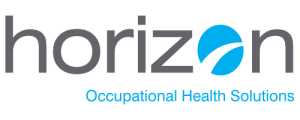
Construction and other physically demanding work, if completed improperly, can put workers at significant risk of muskoskeletal injury or disorders (MSDs). MSDs affect the musculoskeletal system, including muscles, tendons, ligaments, joints, and nerves. They can include repetitive strain injury, cumulative trauma disorder, overuse injury, musculoskeletal injury, and sprains or strains.
To mitigate potential risk of injury – and likely re-injury – on the job site, here are a few tips to help you limit risk for you and your co-workers:
Understand job demands – define requirements of the position and job actions
Job planning can include job specific lifting strategies, understanding when additional support is required, and more. For people working in physically demanding job positions it is especially important that the demands of each job task are clearly understood and defined. By understanding the job’s demands the areas of potential risk for each individual can be identified, depending on physical restrictions or limitations.
Prepare the work station – create an environment appropriate for job tasks
To ensure an ergonomically sound work station, it’s important to prepare the work station appropriately depending on the specific job tasks required to complete each duty. For example, repetitive and strenuous motions should be avoided and alternatives to these kinds of motions are provided in case of fatigue.
Use the right tools – prepare tools and access to tools that suits job needs
The use of improper tools may put the affected individual at risk of injury for a variety of reasons depending on the task at hand. When proper job demands have been identified, it is critical that all required tools for the job be identified in turn to assure that the worker can prepare all equipment required for safe completion of the task.
Stretch regularly – complete job and individual specific stretches as required
Regular stretching is as important as regular exercise and should be part of everyone’s daily routine to help maintain mobility and function, especially those in physically demanding jobs. Improving muscle strength, warming up joints/tendons and addressing personal health all contribute to engineering a stronger physiology and reducing risk of injury.
Specifically for people working in physically demanding jobs, it is important to warm up properly before shift, mid-shift, and after breaks. By completing stretching and strengthening exercises workers can reduce risk of cumulative trauma and increase range of motion to achieve the strongest, most injury resistant state.
Consider injury/illness – understand limitations of previous or existing injury/illness
Studies have proven that employees returning to work after a significant illness or injury are more than likely to require ergonomic support making it all the more important that the employer and the employee work together to assure that the job demands are suited to individual limitations.
Educate the workforce – assure that all employees understand job demands and procedures
Whether its education on job demands, proper workstation set up, use of tools, or improvement to diet and exercise habits, there are plenty of ways to improve both the physical and mental health of employees for optimal performance at work through educational seminars, written material, or interactive exercises.
MSDs can affect all aspects of a worker’s life and they are costly for employers both in terms of disability case management, and replacement costs. Therefore, it is critical that employers and employees alike take proper consideration of the ergonomic conditions in the workplace.
For more information on how Horizon OHS can help your workplace develop ergonomic standards or bona fide job demands analysis contact us today at marketing@horizonohs.com.
